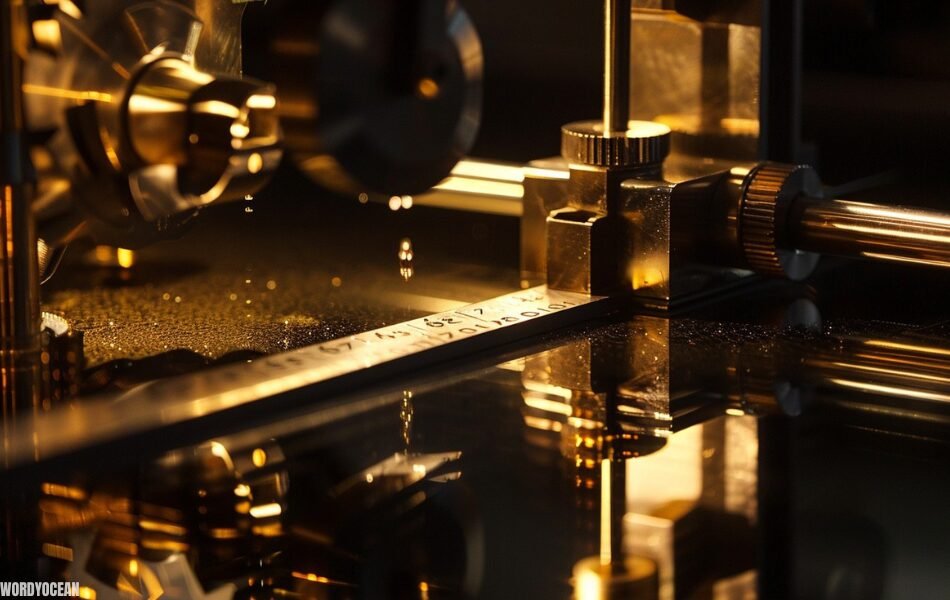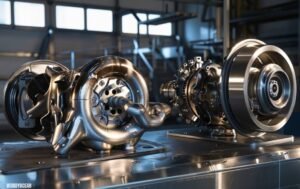Model S2610TR: Discover the Powerful Precision

In the realm of precision engineering, where meticulous craftsmanship meets cutting-edge technology, the “model s2610tr” stands as a testament to human ingenuity. This extraordinary machine, designed to redefine the boundaries of accuracy and efficiency, has garnered widespread attention for its exceptional capabilities and innovative features.
Beyond its sleek exterior and state-of-the-art components, the “model s2610tr” embodies a commitment to excellence that sets it apart from its competitors. Its ability to deliver unparalleled performance across a diverse range of applications has made it a sought-after tool for professionals in various industries.
In this comprehensive exploration, we will delve into the intricacies of the “model s2610tr,” uncovering its unique attributes, exploring its potential applications, and understanding the reasons behind its remarkable success. By the end, you will have a clear grasp of why the “model s2610tr” is considered a pinnacle of engineering achievement.
The “model s2610tr”: A Precision Powerhouse
At the heart of “model s2610tr” lies a sophisticated ensemble of components, each meticulously engineered to deliver exceptional performance. The machine’s core is a high-precision CNC (Computer Numerical Control) system, capable of executing intricate movements with unparalleled accuracy. This system is complemented by a robust mechanical structure, designed to withstand the rigors of demanding applications while maintaining optimal rigidity.
To ensure seamless operation, it is equipped with a user-friendly control interface. This intuitive system allows operators to easily program and execute complex tasks, maximizing efficiency and productivity. Furthermore, the machine incorporates advanced safety features, safeguarding both the operator and the equipment from potential hazards.
The versatility of the “model s2610tr” is further enhanced by its modular design. This allows for customization and adaptability to meet the specific needs of various industries and applications. Whether you are involved in manufacturing, prototyping, or research, the “model s2610tr” can be tailored to your exact requirements.
The “model s2610tr”: A Feature-Rich Powerhouse
The “model s2610tr” is packed with an impressive array of features, each designed to enhance its performance and versatility. One of its standout qualities is its exceptional accuracy, which is achieved through advanced positioning systems and precision control algorithms. This ensures that every task is executed with the utmost precision, resulting in superior product quality.
Another key feature of the “model s2610tr” is its speed and efficiency. Equipped with powerful motors and high-speed spindle capabilities, the machine can rapidly process materials, reducing production time and increasing output. This efficiency is further amplified by its ability to handle complex geometries and intricate details, making it suitable for a wide range of applications.
In addition to its technical prowess, It offers several user-friendly features that contribute to a seamless operating experience. Its intuitive control interface simplifies programming and operation, allowing users to focus on their tasks without unnecessary complexity. Furthermore, the machine’s robust construction and durable components ensure long-lasting reliability and minimal downtime.
One of the most innovative aspects of the “model s2610tr” is its ability to integrate with other systems and technologies. This interoperability allows for seamless data exchange and automation, streamlining workflows and optimizing production processes. Additionally, the machine’s compatibility with various software platforms provides users with flexibility and customization options.
Understanding the “model s2610tr” Workflow
It operates on a systematic workflow that ensures precision and efficiency in its tasks. The process typically begins with the design or import of a digital model or blueprint. This model is then converted into machine-readable code, which provides the machine with the instructions for creating the desired part or component.
Once the code is generated, it is transmitted to the “model s2610tr’s” control system. This system processes the instructions and translates them into precise movements for the machine’s various components, such as the spindle, axes, and tool holders.
The machine then proceeds to execute the programmed tasks, using its cutting tools to remove material from the workpiece. The CNC system ensures that the movements are carried out with extreme accuracy, following the specified dimensions and tolerances. Throughout the process, the machine’s sensors monitor its performance, providing feedback to the control system to maintain optimal accuracy and quality.
After the machining process is complete, the workpiece is typically removed from the machine for further finishing or inspection. The “model s2610tr” can be equipped with additional features, such as automatic tool changers or coolant systems, to enhance its capabilities and efficiency.
The “model s2610tr” vs. Competitors: A Comparative Analysis
When comparing the “model s2610tr” to its competitors, several key factors come into play, including accuracy, speed, versatility, and overall value. While many machines on the market offer similar functionalities, the it stands out in several areas.
- Accuracy: The “model s2610tr” excels in terms of accuracy, thanks to its advanced positioning systems and precision control algorithms. This allows it to produce parts with tighter tolerances and higher quality finishes compared to some of its competitors.
- Speed: The it is also known for its speed and efficiency, which is attributed to its powerful motors and high-speed spindle capabilities. This enables it to complete tasks more quickly, reducing production time and increasing output.
- Versatility: The it offers a high degree of versatility, allowing it to handle a wide range of materials and applications. Its modular design and compatibility with various tools and accessories further enhance its adaptability.
- Value: While the “model s2610tr” may have a higher initial cost compared to some competitors, its long-term value is evident in its superior performance, reliability, and durability. The machine’s ability to deliver high-quality results and minimize downtime can ultimately lead to significant cost savings.
While the “model s2610tr” certainly has its strengths, it is important to note that no machine is perfect. Some competitors may offer specific advantages in certain areas, such as price or specialized features. However, when considering the overall package of accuracy, speed, versatility, and value, the “model s2610tr” consistently outperforms many of its rivals.
The “model s2610tr” in Action: Real-World Applications
The “model s2610tr” has found its place in a wide range of industries, demonstrating its versatility and effectiveness in diverse applications. Here are some examples of how this powerful machine is being used to drive innovation and efficiency:
- Manufacturing: In manufacturing settings, the it is a valuable asset for producing precision components with exceptional accuracy. Its ability to handle complex geometries and intricate details makes it ideal for tasks such as machining molds, dies, and jigs.
- Automotive: The automotive industry relies heavily on the “model s2610tr” for producing critical components, such as engine blocks, transmission parts, and suspension components. The machine’s precision and speed ensure that these components meet the stringent quality standards required for automotive applications.
- Aerospace: The aerospace industry demands the highest levels of precision and reliability, and the “model s2610tr” delivers on both fronts. It is used to manufacture critical components for aircraft and spacecraft, including turbine blades, landing gear parts, and structural components.
- Medical Devices: The “model s2610tr” plays a vital role in the production of medical devices, where precision and accuracy are paramount. It is used to manufacture components for surgical instruments, prosthetics, and other medical equipment.
- Research and Development: In research and development laboratories, the “model s2610tr” is an invaluable tool for prototyping and testing new designs. Its versatility and precision allow researchers to create complex prototypes with minimal effort, accelerating the development process.
Troubleshooting and Maintenance: Ensuring Optimal Performance
While the “model s2610tr” is designed for reliability, it’s essential to be aware of potential issues and how to address them. Here are some common troubleshooting tips and recommendations for maintenance:
Common Issues
Over time, cutting tools can become worn or damaged, affecting the quality of the finished product. Regular tool inspection and replacement are crucial. Insufficient or improper lubrication can lead to increased friction and premature wear. Ensure that all moving parts are adequately lubricated according to the manufacturer’s guidelines. Electrical faults can cause the machine to malfunction. Check for loose connections, damaged cables, or issues with the control system. Software errors or conflicts can disrupt the machine’s operation. Regularly update the machine’s software and consult the user manual for troubleshooting guidance.
Troubleshooting Tips
The user manual provides detailed troubleshooting information and guidance for addressing common issues. The machine’s display may provide error codes that can help identify the root cause of the problem. Visually inspect the machine for any signs of damage or wear, such as loose parts or worn belts. If you are unable to resolve the issue on your own, contact the manufacturer’s technical support team for assistance.
Maintenance Recommendations
Keep the machine clean to prevent debris from accumulating and interfering with its operation. Follow the manufacturer’s recommendations for lubrication intervals and use the appropriate lubricants. Inspect and replace tools as needed to ensure optimal performance. Keep the machine’s software up-to-date to benefit from bug fixes and new features. Schedule regular maintenance checks with a qualified technician to identify and address potential issues before they become more serious.
By following these troubleshooting tips and maintenance recommendations, you can help ensure the long-term reliability and performance of your “model s2610tr.”
Conclusion: The “model s2610tr”: A Precision Powerhouse
In conclusion, the “model s2610tr” stands as a testament to the power of precision engineering. Its exceptional accuracy, speed, versatility, and reliability make it a valuable asset for professionals across various industries.
From manufacturing and automotive to aerospace and medical devices, the “model s2610tr” has demonstrated its ability to deliver exceptional results and drive innovation. Its user-friendly interface and robust construction ensure a seamless and efficient operating experience.
If you are seeking a machine that combines precision, power, and versatility, the “model s2610tr” is an excellent choice. Whether you are a seasoned professional or just starting out, this remarkable tool can help you achieve your goals and elevate your work to new heights.
We encourage you to explore the “model s2610tr” further and discover how it can benefit your specific needs. Whether you are looking to improve your manufacturing processes, create innovative products, or simply enhance your productivity, this precision powerhouse is sure to exceed your expectations.
FAQ’s
Q: What is the meaning of device models?
A: Device models refer to the specific configurations or variations of a particular device, such as smartphones, laptops, or tablets. Each device model may have unique features, specifications, and capabilities, such as screen size, processor speed, storage capacity, and camera resolution. These differences can impact the device’s performance, price, and overall user experience.
Q: What is models machine learning?
A: In machine learning, models are mathematical representations that learn from data to make predictions or decisions. These models can be trained on large datasets to identify patterns, recognize objects, or predict future outcomes. There are various types of machine learning models, including linear regression, decision trees, neural networks, and support vector machines, each with its own strengths and weaknesses.
Q: What is model cycle?
A: The model cycle refers to the iterative process of developing, training, evaluating, and deploying machine learning models. It involves several key stages: data collection and preparation, model selection and training, evaluation and refinement, and deployment and monitoring. The model cycle is often a continuous process, as models may need to be updated or retrained as new data becomes available or performance requirements change.
Q: What is modeling in remote sensing?
A: Modeling in remote sensing involves creating mathematical representations of the Earth’s surface and atmosphere based on data collected from remote sensing platforms, such as satellites or aircraft. These models can be used to analyze and interpret various environmental phenomena, including land cover changes, vegetation health, water quality, and atmospheric conditions. Remote sensing models can be applied to a wide range of applications, such as disaster management, urban planning, and climate change research.








